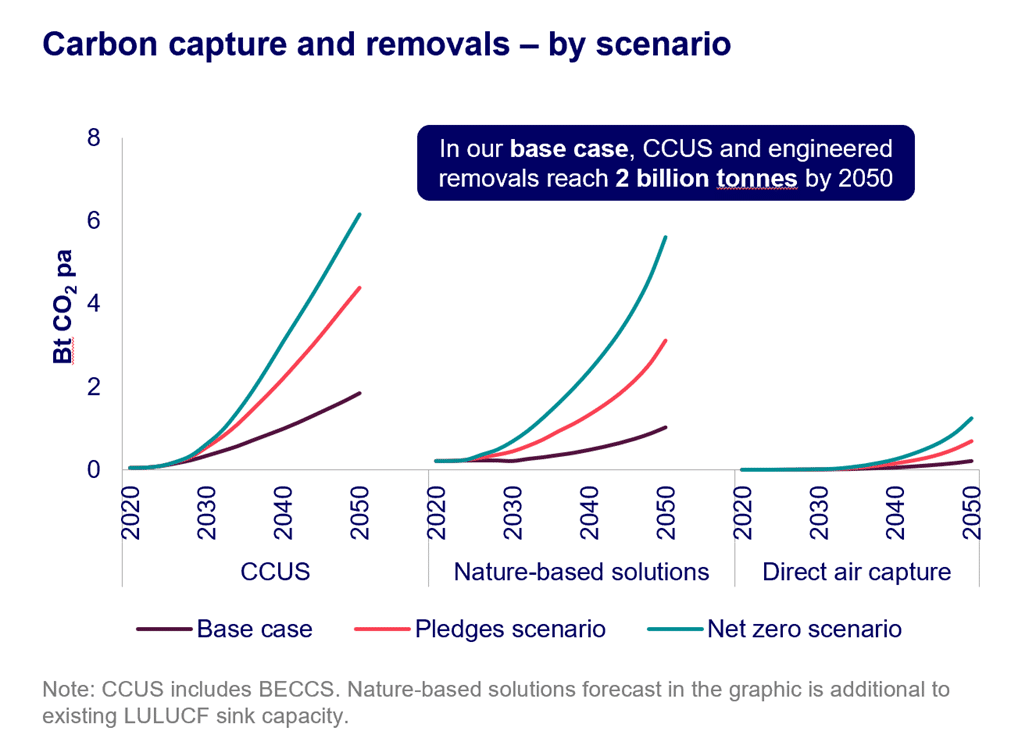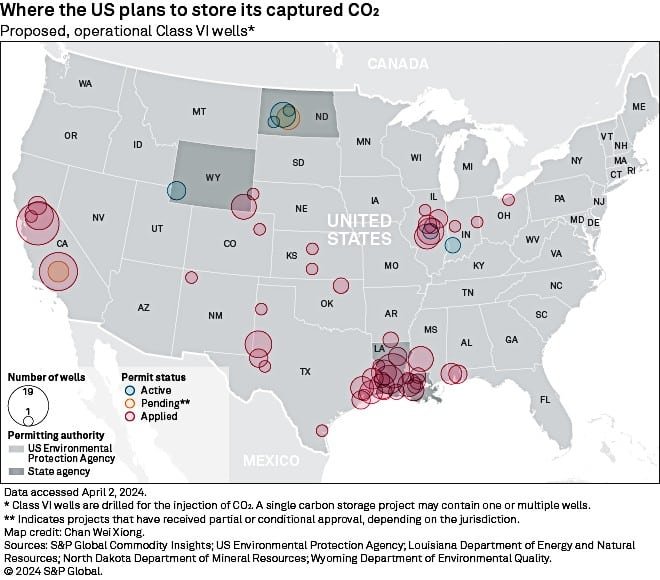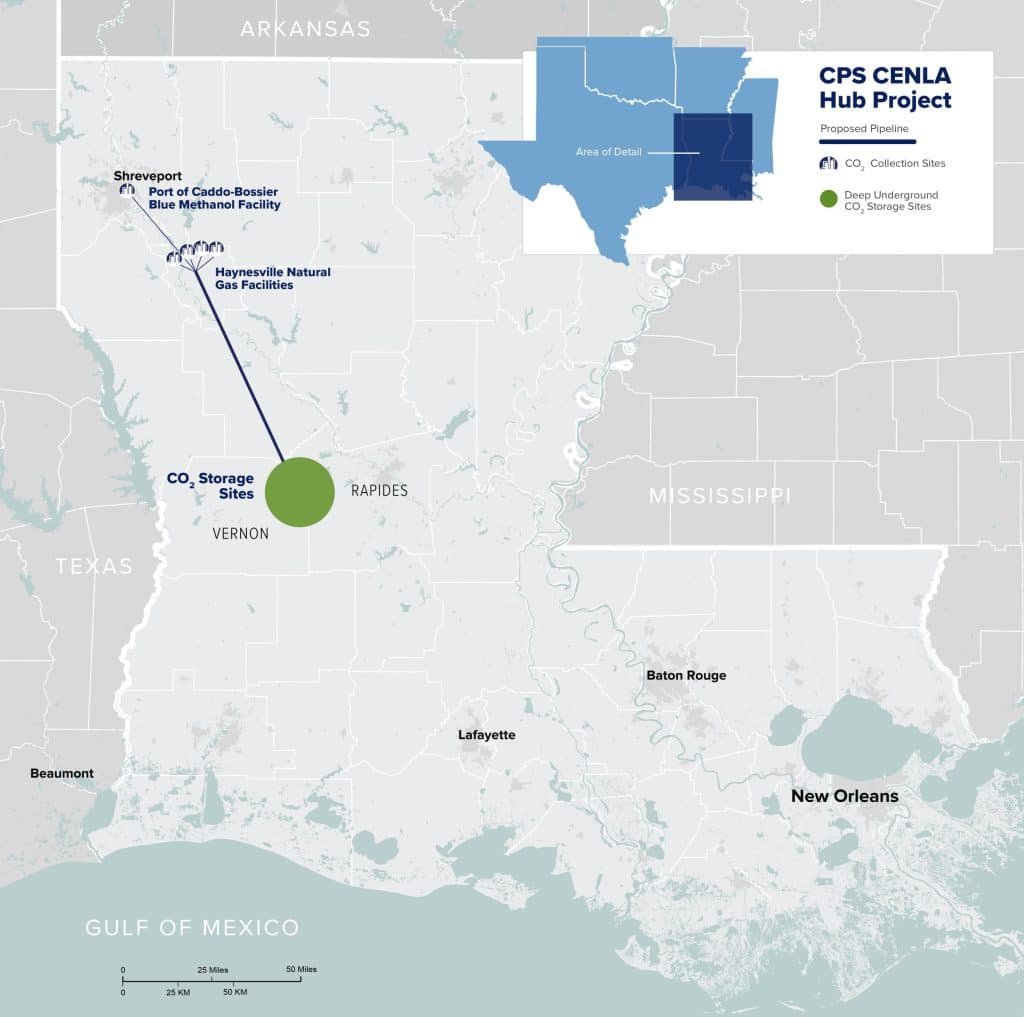CapturePoint LLC has forged a strategic alliance with Energy Transfer LP to embark on a groundbreaking initiative to capture carbon dioxide (CO2) emissions from Energy Transfer’s gas processing facilities in Louisiana.
Under the terms of the agreement, CO2 emissions from Energy Transfer’s Haynesville facilities will be directed to CapturePoint’s regional carbon storage project, known as the Central Louisiana Regional Carbon Storage Hub (CENLA Hub).
Capturing Emissions in A Game-Changing Alliance
According to Wood Mackenzie’s analysis last year, the current rate of carbon removal efforts is projected to sequester only 2 billion tonnes of CO2 by 2050, based on the base case scenario. This capacity for carbon capture corresponds with the trajectory outlined in the 2.5°C global warming scenario.
To meet the crucial 1.5°C warming threshold by midcentury, it’s estimated that 7 billion tonnes of carbon capture and removal are necessary.
The partnership between CapturePoint and Energy Transfer is more than just the offtake agreement. The companies have also revised a letter of intent outlining a potential joint venture, stating that it,
“…reflect Energy Transfer’s recognition of the CENLA Hub as one of the most promising deep underground CO2 storage sites in the nation.”
In preparation for this ambitious endeavor, CapturePoint is in the process of securing state permits to drill 12 Class VI storage wells in Rapides and Vernon parishes. These wells will serve as the primary infrastructure for injecting CO2 deep underground, contributing to the mitigation of greenhouse gas emissions.
-
This venture would entail Energy Transfer co-owning and operating the CENLA Hub, signifying a significant commitment to advancing carbon capture and storage initiatives.
CapturePoint holds immense promise as a premier CO2 storage site. It can sequester up to two million tons of CO2 annually. Based on data from test wells, CapturePoint estimates that the hub’s total storage capacity could reach several hundred million tons, positioning it as a pivotal asset in the nation’s efforts to combat climate change.
The costs associated with carbon capture, transportation, and storage vary across different industrial applications. According to a 2023 study by the Energy Futures Initiative, natural gas processing ranks among the most financially viable applications, with a levelized cost of less than $40 per metric ton, further offset by federal tax credits.
Tracy Evans, CEO of CapturePoint, expressed confidence in the project’s potential, emphasizing Energy Transfer’s recognition of the CENLA Hub as a cornerstone of deep underground CO2 storage solutions.
Laying the Groundwork for CCS in Australia
Over in Australia, Glencore is awaiting approval from Queensland for a significant carbon capture and storage (CCS) project. It aims to bury liquefied carbon dioxide deep underground.
The proposal, valued at A$210 million (almost US$140), would pump CO2 from a coal-fired power plant into an aquifer, a move essential for achieving net zero goals, according to governments. However, farm groups oppose Glencore’s plan, citing potential risks to water supplies.
The Swiss commodities giant intends to conduct a three-year CCS pilot project, aiming to sequester 330,000 metric tons of CO2 from a local coal-fired power plant deep underground.
According to Glencore spokesperson Francis De Rosa, this initiative serves as a crucial test case for onshore CCS in Australia. He further added that it’s supported by robust data and analysis, with multiple government agencies endorsing the plan.
However, farm groups express concerns about potential groundwater contamination within the Great Artesian Basin, a vital water source for agriculture and communities. They fear that the injected CO2 could interact with the rock, releasing toxic substances like lead and arsenic.
Michael Guerin, representing AgForce farm association, deems the project “unthinkable” and initiated legal action to prompt federal review. Despite Glencore’s insistence on scientific merit, Queensland Premier Steven Miles voices skepticism, raising doubts about compliance with environmental regulations.
Environmental Innovations Down Under
The Queensland government is set to decide on Glencore’s environmental impact assessment by the end of May. If approved, the project would mark a significant step in Australia’s CCS landscape.
Glencore asserts that its plan could eventually capture up to 90% of emissions from the Millmerran power plant, albeit currently targeting only 2%.
Managed by Glencore subsidiary Carbon Transport and Storage Corporation (CTSCo), the project has garnered investment from Japanese firms Marubeni Corp and J-POWER, indicating international interest and financial backing.
Australia’s CCS endeavors have been limited, with Chevron’s Gorgon LNG project being the sole active operation. However, with two more projects underway and 14 in development, CCS initiatives are gaining momentum. While aquifer storage for CO2 is increasingly adopted, stringent regulatory scrutiny ensures that only suitable sites are chosen.
Ultimately, the partnership between CapturePoint and Energy Transfer represents a significant step forward in pursuing sustainable carbon management strategies.




